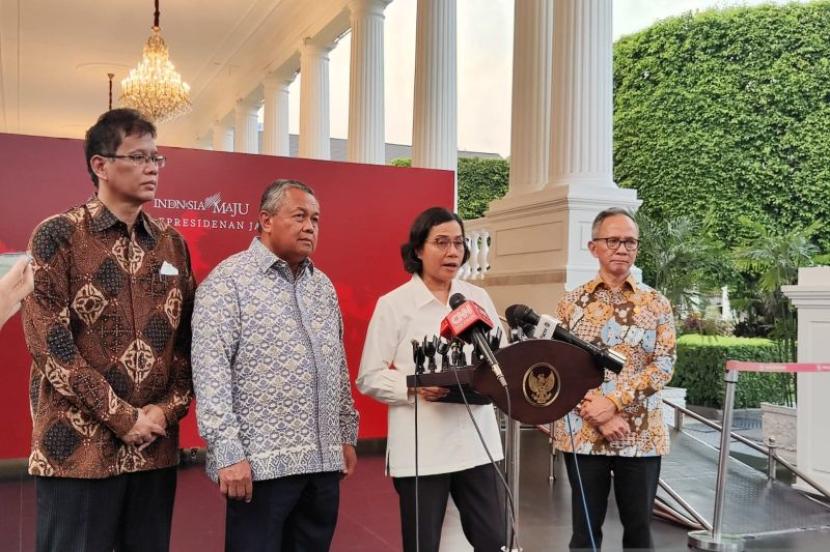EKBIS.CO, JAKARTA -- The Indonesia Central Statistical Agency (BPS) reports Indonesia's economic growth of 5.05 percent on an annual basis (year-on-year/yoy) in the second quarter of 2024.
The Gross Domestic Product (GDP) on the basis of Applicable Prices was recorded at Rp 5,536.5 trillion, while GDP on the basis of constant prices reached Rp 3.231 trillion.
“Indonesia's economic growth in the second quarter of 2024 compared to the second quarter of 2023 or year-on-year (yoy) grew by 5.05 percent,” BPS Deputy for Balance Sheet and Statistical Analysis Moh Edy Mahmud said at a press conference, in Jakarta, Monday (5/8/2024).
Indonesia Finance Minister (Menkeu) Sri Mulyani said that keeping Indonesia's economic growth at 5.1 percent in the second half of 2024 will not be easy due to the weakening global economy.
Sri Mulyani said that the government would continue to look at factors of household consumption, investment, exports and imports in order to keep economic growth at a rate of 5.1 percent, even 5.2 percent in the third and fourth quarters.
“Of course, this is not easy at a time when the global economy is currently prone to weakness and fragmentation,” the Minister said during a press briefing at the President's Office in Jakarta on Monday.
Therefore, Finance Minister together with Minister for Economic Affairs Airlangga Hartarto with a directive from President Joko Widodo will undertake a number of policy measures to maintain economic growth.
Nevertheless, the Ministry of Finance estimated that Indonesia's economic growth of 5.05 percent on an annual basis in the second quarter of 2024 is still quite good and must be maintained.
“Growth in Q2 was pretty good, still pretty good and has momentum that we have to maintain. Consumption, investment, exports, imports that we will pay attention to,” the Menkeu said
Coordinating Minister for Economic Affairs Airlangga Hartarto said that Indonesia's economic growth in the second quarter of 2024 of 5.05 percent on a year-on-year basis is still better than other countries such as China to South Korea (South Korea).
In its exposure, Indonesia's economic growth is still higher than China which recorded 4.7 percent (yoy), Singapore (2.9 percent), South Korea (2.3 percent) and Mexico (2.24 percent).
“The explanation was that in the midst of global uncertainty, our economic fundamentals are still good. And in the second quarter we grew 5.05 percent,” Airlangga said during a press conference on economic growth in Q2 2024 at the Ministry of Economic Affairs Office on Monday.
Airlangga explained that Indonesia's economic growth in the second quarter of this year was supported by almost all sectors, mainly from the household consumption sector.
Household consumption contributed 54.53 percent to economic growth or grew 4.39 percent (yoy). Household consumption was still the biggest source of growth at 2.62 percent, which was mainly driven by religious big day celebrations.
“Then government consumption is positive, Gross Fixed Capital Formation (PMTB), exports of goods and services, and imports of goods and services (positive),” Airlangga said.
Then the next highest source of growth was Gross Fixed Capital Formation (PMTB) which contributed 1.32 percent, government consumption 0.10 percent, and net exports 0.25 percent. In general, the entire expenditure component experienced positive growth.
Furthermore, the Consumption Expenditure of Nonprofit Institutions Serving Households (PK-LNPRT) grew by 9.98 percent. This component contributes 1.32 percent to GDP in general.
Exports and imports also experienced high growth, at 8.28 percent and 8.57 percent, respectively. The increase in exports was driven by the increase in the value and volume of oil and non-oil gas exports, while the increase in imports was driven by the increase in imports of raw materials and auxiliaries.
Meanwhile PMTB grew 4.43 percent and government consumption grew 1.42 percent. Airlangga said, in terms of business field, Indonesia's economic growth is still supported by the money processing industry growing 3.95 percent (yoy).
“The agricultural sector has also stepped up. He jumped to 3.25. Construction also grew high at 7.29 percent, then mining, logistics and warehousing and transportation also neared 10 percent at 9.56 percent,” he said.


